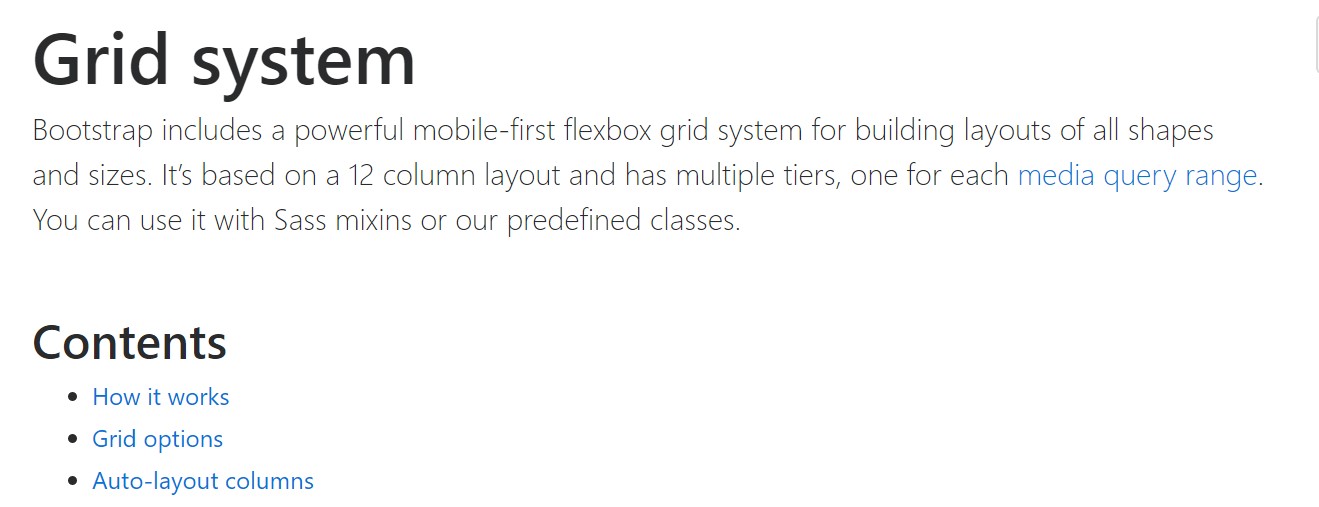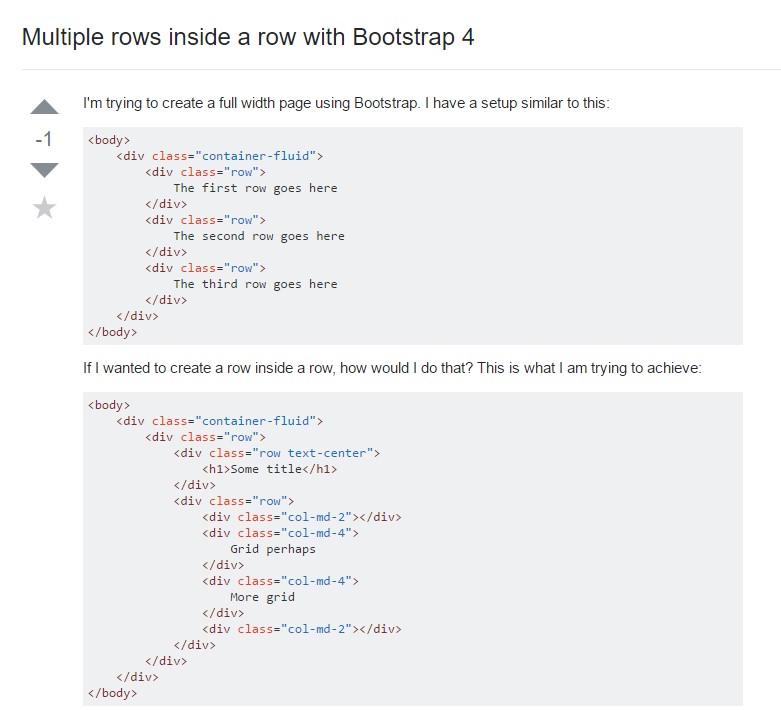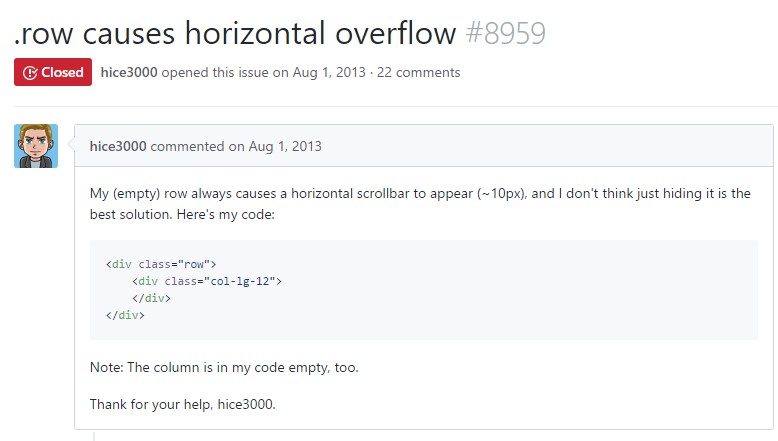Bootstrap Row Panel
Overview
Exactly what do responsive frameworks do-- they deliver us with a practical and working grid environment to place out the content, ensuring that if we specify it correct and so it will work and present correctly on any sort of device no matter the sizes of its display. And just like in the building each framework including the most prominent one in its own most recent version-- the Bootstrap 4 framework-- include simply a few major components that made and integrated properly can help you make practically any type of pleasing look to match your design and sight.
In Bootstrap, normally, the grid system becomes designed by three basic elements that you have most probably currently seen around reviewing the code of several webpages-- these are the
.container.container-fluid.row.col-Assuming that you're rather new to this entire thing and occasionally get to wonder which was the right manner these 3 has to be placed inside your markup here is really a simple method-- all you require to always remember is CRC-- this abbreviation comes with regards to Container-- Row-- Column. And considering that you'll shortly get used to viewing the columns acting as the innermost component it is actually not vary likely you would definitely misstep what the first and the last C means. ( read more)
Handful of words about the grid system in Bootstrap 4:
Bootstrap's grid system uses a series of containers, rows, and columns to style as well as adjust web content. It's set up with flexbox and is entirely responsive. Listed here is an illustration and an in-depth look at just how the grid interacts.
The aforementioned situation generates three equal-width columns on small, normal, big, and also extra large size gadgets working with our predefined grid classes. Those columns are focused in the page with the parent
.containerHere is simply how it does the job:
- Containers give a method to center your site's materials. Use
.container.container-fluid- Rows are horizontal sets of columns which make certain your columns are organized correctly. We use the negative margin method upon
.row- Web content should really be inserted in columns, also only columns may be immediate children of Bootstrap Row Class.
- Because of flexbox, grid columns with no a specified width is going to instantly format using equal widths. For example, four instances of
.col-sm- Column classes reveal the quantity of columns you 'd like to employ out of the possible 12 per row. { So, assuming that you want three equal-width columns, you can employ
.col-sm-4- Column
widths- Columns have horizontal
paddingmarginpadding.no-gutters.row- There are 5 grid tiers, one for every responsive breakpoint: all breakpoints (extra little), little, standard, huge, and extra large.
- Grid tiers are built upon minimal widths, meaning they concern that tier and all those above it (e.g.,
.col-sm-4- You can apply predefined grid classes as well as Sass mixins for extra semantic markup.
Bear in mind the limitations as well as bugs around flexbox, like the incapability to work with certain HTML components as flex containers.
Even though the Containers give us fixed in max size or extending from edge to edge horizontal area on display screen with small helpful paddings around and the columns give the means to delivering the display area horizontally-- once again with several paddings about the certain content providing it a space to take a breath we are simply heading to target our interest to the Bootstrap Row component and all of the great approaches we can use it for styling, aligning and delivering its materials working with the clear new to alpha 6 flexbox utilities that are actually a number of classes to incorporate to the
.row-sm--md-Steps to utilize the Bootstrap Row Panel:
Flexbox utilities may be used for putting together the disposition of the features placed in a
.row.flex-row.flex-row-reverse.flex-column.flex-column-reverseListed here is exactly how the grid tiers infixes get utilized-- as an example to stack the
.row.flex-lg-column.flex-With the flexbox utilities applied to a
.row.justify-content-start.justify-content-end.justify-content-center.justify-content between.justify-content-aroundThis counts as well to the upright placement which in Bootstrap 4 flexbox utilities has been actually addressed as
.align-.align-items-start.row.align-items-end.align-items-centerAnother alternatives are lining up the items by their base lines being adjusted the class is
.align-items-baseline.align-items-stretchAll the flexbox utilities specified so far sustain separate grid tiers infixes-- include them right before the very last word of the matching classes-- like
.align-items-sm-stretch.justify-content-md-betweenConclusions
Here is simply how this necessary but at very first look not so customizable component-- the
.rowCheck a few youtube video guide relating to Bootstrap Row:
Related topics:
Bootstrap 4 Grid system: authoritative records

Multiple rows inside a row with Bootstrap 4

One more difficulty: .row
causes horizontal overflow
.row
